Call me old school. Or just call me old. Either way, I still get a kick out of Disney’s classic “dark rides” – those slow-moving, bare-bones attractions that last all of two or three minutes, but often require a wait time of an hour or more.

For the most part, dark rides are [and in some cases, were] located in the Fantasyland sections of Disney parks worldwide.
The ride vehicles for dark rides – usually with one or two rows that seat two adults and/or children in each row – are themed to the specific attraction, typically a classic Disney animated film. The vehicles move slowly on a single track, with many sharp twists and turns along the route.
As a safety precaution, the riders must pull down a lap bar before taking off on their adventure. Music from the movie each ride is based on is pumped in through hidden speakers.
The lone exception to this format is Peter Pan’s Flight, which features ride vehicles in the shape of pirate ships with just one row of seating. The ships hang from a single track mounted on the ceiling.
Guests glide over the Darling children’s bedroom, then pass over a miniature model of the city of London at night, before catching glimpses of Captain Hook’s ship and his motley crew.
Just what is a “dark ride”?
To begin with, dark rides take place inside show buildings that are enclosed in darkness [makes sense, right?]. Each ride vehicle passes through a variety of scenes where black lights are used to illuminate those scenes.

Swinging opaque doors are often used to separate scenes and control what guests are seeing. In addition, ride designers use a variety of visual tricks to enhance each attraction by creating the illusion of distance.
Disneyland is home to the most classic dark rides. In addition to Peter Pan’s Flight, there’s Mr. Toad’s Wild Ride, Snow White, Alice in Wonderland and Pinocchio’s Daring Journey.
Here’s a rundown of each of those Disneyland dark rides:
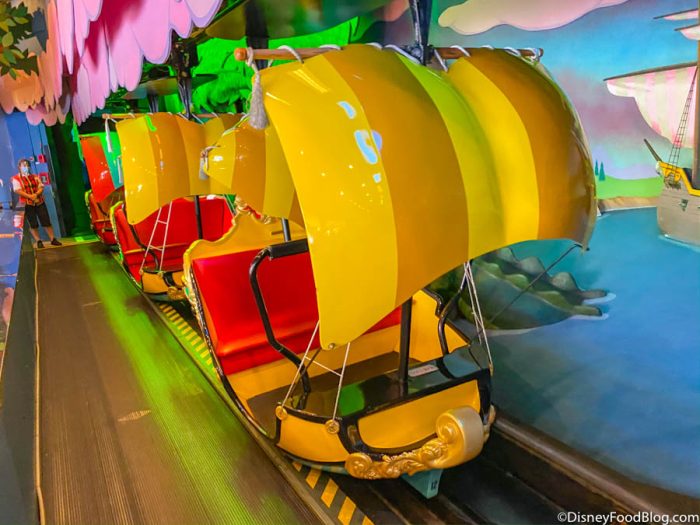
PETER PAN’S FLIGHT
Peter Pan’s Flight, based on the 1953 Peter Pan movie, debuted with the rest of Disneyland in July of 1955. It was perhaps the most innovative attraction in the park and remains one of the most popular experiences for guests of all ages.
As mentioned above, the ride vehicle for Peter Pan’s Flight is a miniature pirate ship, complete with a puffy sail, which is attached to a guide rail affixed to the ceiling. The idea is to have the guests experience “flying” over several classic scenes from the movie. This is Soarin’ decades before Soarin’ landed in EPCOT.
It should be noted that three versions of Peter Pan’s Flight [in Disneyland, Walt Disney World and Tokyo Disneyland] have one row of seating; Disneyland Paris and Shanghai Disneyland offer two rows, which speeds up the wait times considerably and allows for larger groups to sit together.
On the Disneyland version, your ship leaves the loading area and glides over the Darling children’s nursery, with Peter telling guests: “Come on, everybody, here we go-o-o-o!”
Then it’s up, up and away as you’re headed “off to Neverland” as you “think of a wonderful thought, any merry little thought …”
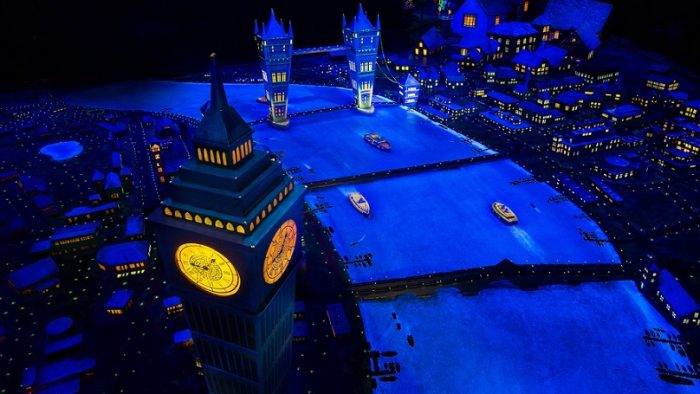
Next, you’ll glide over the Lost Boys’ Camp, Mermaid Lagoon and Skull Rock.
Finally, you fly over a more realistic-sized pirate ship, where Captain Hook, Mr. Smee and Tick-Tock the Crocodile engage in a bit of buccaneer mayhem.
Disneyland’s version of Peter Pan’s Flight has been updated over the years [including a major overhaul in 1983 with the rest of Fantasyland] and now features more enhanced scenes and lighting effects. In addition, most of the figures seen throughout the ride are now Audio-Animatronics.
In 2014, the Walt Disney World version was upgraded to include an expanded indoor queue, which includes interactive murals and a detailed look at the Darling family’s residence. Most important: The queue is air-conditioned!
As dark rides go, Peter Pan’s Flight is easily the most complex – and enjoyable – experience in the genre.
It is featured at Disneyland, Walt Disney World, Disneyland Paris, Tokyo Disneyland and Shanghai Disneyland.

MR. TOAD’S WILD RIDE
Walt Disney’s fascination with Kenneth Grahame’s 1908 book, “The Wind in the Willows,” resulted in the Disney animated film The Adventures of Ichabod and Mr. Toad in 1949 and the subsequent creation of Mr. Toad’s Wild Ride, which thrilled Disneyland guests on opening day in 1955.
On Mr. Toad’s Wild Ride, guests assume the role of Mr. Toad as he careens wildly through his stately mansion [Toad Hall], the streets of London and through the English countryside.
Two guests climb into a miniature one-seat 1900s-era roadster and begin their perilous trek, encountering one “death-defying” obstacle after another, including a near-head-on collision with an oncoming train.
Unlike most every other Disney ride, however, Mr. Toad’s Wild Ride does not end happily ever after. In fact, the ride concludes when your car motors into hell, which is populated by cartoon-like horned devils and pitchforks.
Much like Peter Pan’s Flight, Disneyland’s version of Mr. Toad’s Wild Ride was updated in 1983. Although it has seen additional upgrades over the years, the ride remains a Fantasyland staple, resplendent in its redundancy.

Mr. Toad’s Wild Ride was among the opening day Fantasyland attractions at Walt Disney World in 1971. It closed in 1998 after a 27-year run and was replaced by the Many Adventures of Winnie the Pooh.
Not to worry, though. Mr. Toad – or at least a statue of him – currently rests in peace in the cemetery adjacent to the Haunted Mansion.
The WDW version of Mr. Toad’s Wild Ride was unique in that it gave guests two different experiences, thanks to its Right Track and Left Track layouts.

Toad Hall, in fact, is home to a fast-food restaurant in that park’s Fantasyland. The exterior of the building looks very much like the front of the Mr. Toad’s Wild Ride in Disneyland … complete with a figure of Mr. Toad above the entrance.

SNOW WHITE’S ENCHANTED WISH
The dark ride currently known as Snow White’s Enchanted Wish has seen many changes, both in the attraction itself and in its name.
The attraction opened in 1955 with the rest of Disneyland and was called Snow White and Her Adventures. During the Fantasyland overhaul in 1983, the name was changed to Snow White’s Scary Adventures, in part to reflect the dark encounters with the evil witch from the Snow White and the Seven Dwarfs movie.
The name has been toned down and is currently Snow White’s Enchanted Wish. When Walt Disney World opened in 1971, the attraction was called, simply, Snow White’s Adventures.
Meanwhile, in Disneyland Paris, the attraction is known as Blanche-Niege et les Sept Nains.
When Snow White and her Adventures opened in Disneyland, most riders were confused: Snow White never appeared during the ride. As it turned out, the ride was designed as if you, the rider, were Snow White.

During the most recent iteration of the ride, guests are given a version of the Snow White story closer to the movie … and it’s more toned-down than 1983’s Scary Adventures storyline.
For example, after entering the show building through the Evil Queen’s castle, guests now see Snow White’s room rather than a dreary dungeon in the queue.
The ride vehicles, which look like hollowed-out logs and are named after the seven dwarfs [kids love it when they climb into the Dopey vehicle], first enter the Dwarfs’ cottage, where the scent of apple pie now wafts through the air.
Guests hear the Dwarfs perform “The Silly Song” as Snow dances with Sneezy and Dopey … all the while, the Evil Queen looks on menacingly through a window and says, “These dwarfs can’t hide Snow White from me!”
As the ride vehicle travels through the woods, a projection shows the Dwarfs marching to work in the diamond mine while singing the classic “Heigh Ho.” Once inside the mine, we see Dopey with diamonds in his eyes and Doc checking out some of the glittering jewels.
After exiting the mine, guests enter the Evil Queen’s castle, the place where she concocts her poison apple and where she turns into the Evil Witch. A projection on a mirror shows Snow White taking a bite out of the tainted fruit, and falling under its spell, before the mirror shatters.
The next-to-last scene depicts the dwarfs chasing the Evil Witch onto a cliff and toward her ultimate demise.
Finally, we see the Prince giving Snow White a kiss to awaken her from her poison apple-induced slumber … with the last scene featuring Snow White, her Prince, her woodland friends and the Seven Dwarfs reunited and living “happily ever after.”
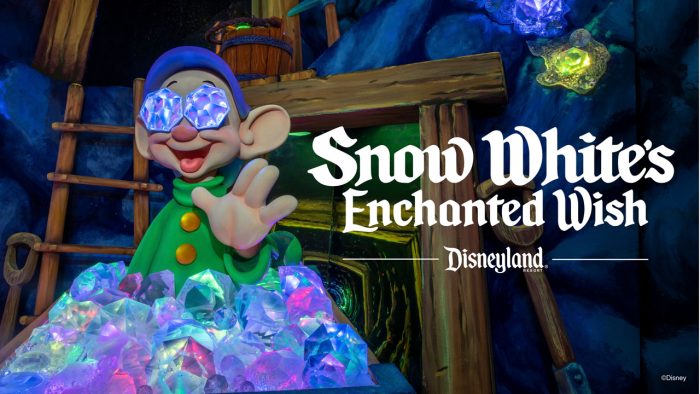
Walt Disney World’s version of the Snow White dark ride closed in 2012 to make way for a meet-and-greet area [Princess Fairytale Hall] as part of the Magic Kingdom’s New Fantasyland overhaul.
Snow White would make a triumphant return two years later when the Seven Dwarfs Mine Train attraction opened in WDW’s Magic Kingdom on the spot where the submarine voyage once held sway.
Interestingly, some of the figures used in the original Snow White attraction resurfaced in the closing scene as mine train riders return to the station.

PINOCCHIO’S DARING JOURNEY
This dark ride, inspired by Disney’s second animated feature film, wasn’t among the opening-day attractions at Disneyland.
In fact, it wasn’t until 1983 – as part of the Fantasyland makeover – when Pinocchio’s Daring Journey debuted in Disneyland.
The evolution of Pinocchio’s Daring Journey can be traced back to the Mickey Mouse Club Theater, which was removed from the park in 1976.
At that time, plans were set in motion for the massive makeover of Fantasyland … while existing rides were upgraded, it also was decided to add a new adventure, which turned into the Pinocchio-themed ride, on the space once occupied by the Mouseketeers.

The special effects employed during the ride include the use of holographic material, seen when the young boys on Pleasure Island turn into donkeys, and a classic Pepper’s ghost illusion, when the Blue Fairy magically disappears, leaving a pile of fiber-optic dust in her wake.
The figures used throughout the attraction are three-dimensional and stay true to their animated renderings.
The ride vehicle is designed to look like a wooden cart, the type you might see in Pinocchio’s village. The carved faces of Figaro, Cleo and Jiminy Cricket appear on the fronts of the carts.
The ride experience is quite elaborate, with scenes that include Stromboli’s theater, where Pinocchio and a pair of marionettes dance on stage; Pleasure Island and all of its perceived debauchery; Lampwick turning into a donkey in a pool hall; and encountering the menacing Monstro the Whale.
The ride concludes with Pinocchio being reunited with Geppetto and turning into a real boy.

Pinocchio’s Daring Journey opened in Tokyo Disneyland about a month and a half before it debuted in Disneyland in 1983.
The Disneyland Paris version of the attraction opened with the rest of the park in 1992 and remains a park staple.
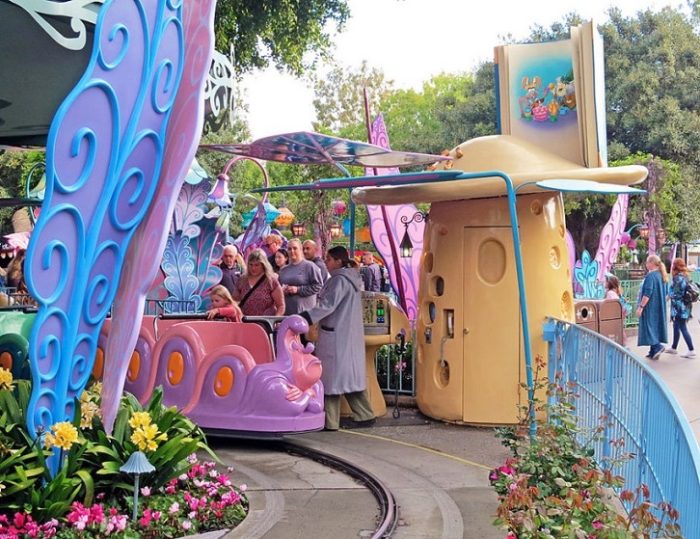
ALICE IN WONDERLAND
This adventure, like the movie it’s based on, is a bit helter-skelter, as dark rides go.
First of all, the Disneyland-exclusive attraction starts and ends out-of-doors, in a garden filled with massive artificial flowers, mushrooms and books.
Second, the ride track takes guests up onto a second floor, a first for Disneyland.
Because the ride was built as an extension connected to the rear of the building that houses Peter Pan’s Flight and Mr. Toad’s Wild Ride, space was limited … so the designers decided to tack on a second floor to the attraction.
Guests board a ride vehicle in the shape of a giant caterpillar and are immediately taken down the rabbit hole, where pieces of furniture, artwork and vases portend of the mayhem about to ensue.
In short order, guests encounter Alice, the White Rabbit, a garden of live flowers singing “All in the Golden Afternoon,” the Caterpillar, the Tiger Lily, the Cheshire Cat and assorted distorted woodland creatures.

Your ride vehicle then comes upon playing cards who are painting a white rose tree red, at which point the White Rabbit announces the Queen of Hearts, who is playing croquet with a flamingo as a club and a hedgehog as a ball.
Guests then enter the courtroom, where the Queen proclaims “Off with their heads!” while a small army of large playing cards marches toward the vehicle. From here, the vehicles push past two guards and out into the open second-floor rooftop, where close-up views of Matterhorn Mountain and the monorail briefly capture your attention.
After winding down a giant vine, guests reenter the building and reach the finale – the Mad Tea Party, where the Mad Hatter and the March Hare sing “A Very Merry Unbirthday,” at which point, a giant unbirthday cake topped with a stick of dynamite explodes.
Alice in Wonderland, which opened in 1958, was based on the 1951 Disney animated feature Alice in Wonderland. The attraction can only be experienced in Disneyland, making it unique in that regard.

And, of course, there are the Alice-themed Mad Tea Cups attractions in five of the six Disney theme parks: Disneyland, Walt Disney World, Disneyland Paris [known as the Mad Hatter’s Tea Cups], Tokyo Disneyland [Alice’s Tea Party] and Hong Kong Disneyland [Mad Hatter Tea Cups].
Chuck Schmidt is an award-winning journalist and retired Disney cast member who has covered all things Disney since 1984 in both print and on-line. He has authored or co-authored seven books on Disney, including his On the Disney Beat and The Beat Goes On for Theme Park Press. He also has written a regular blog for AllEars.Net, called Still Goofy About Disney, since 2015.



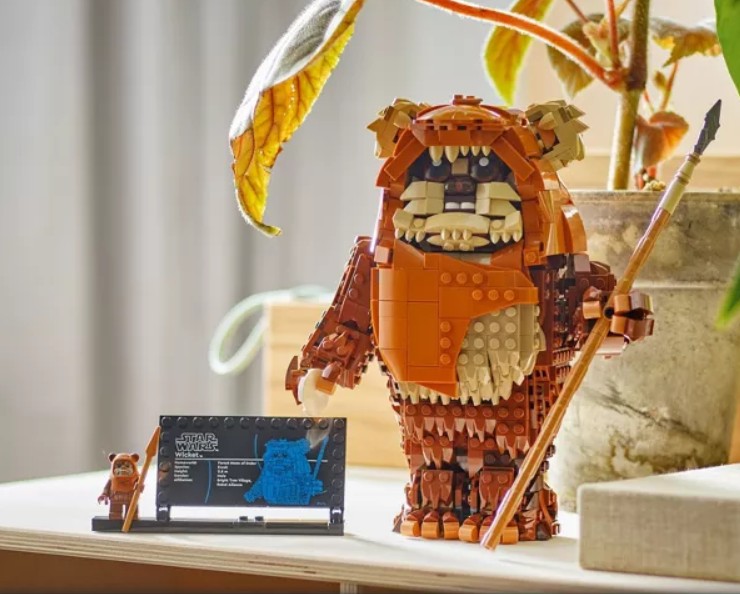
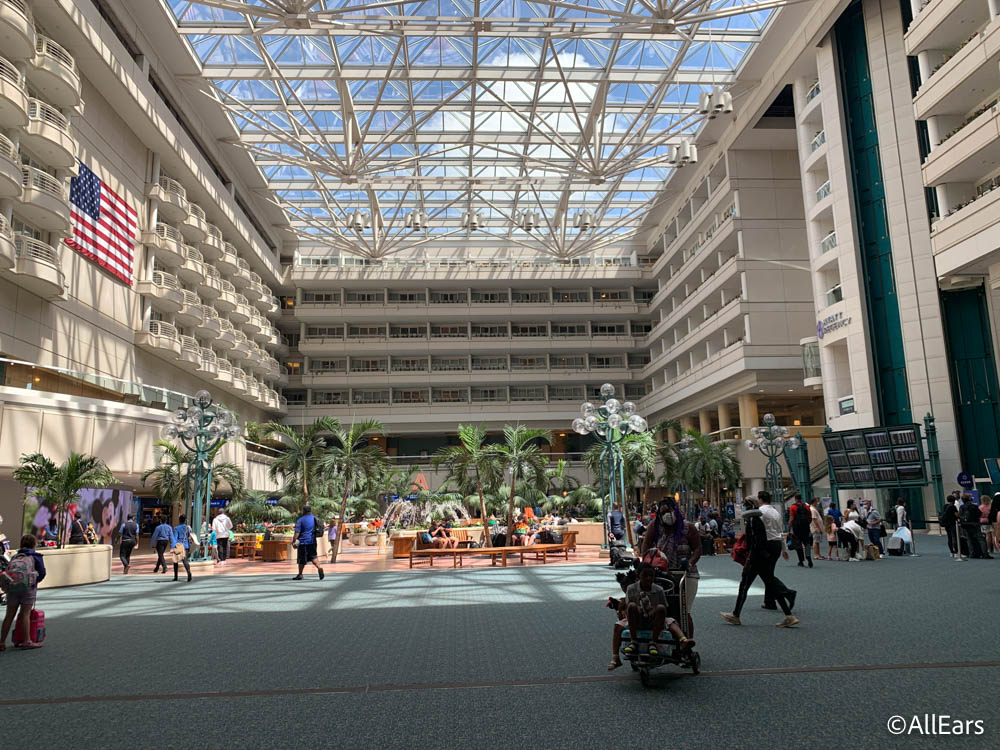
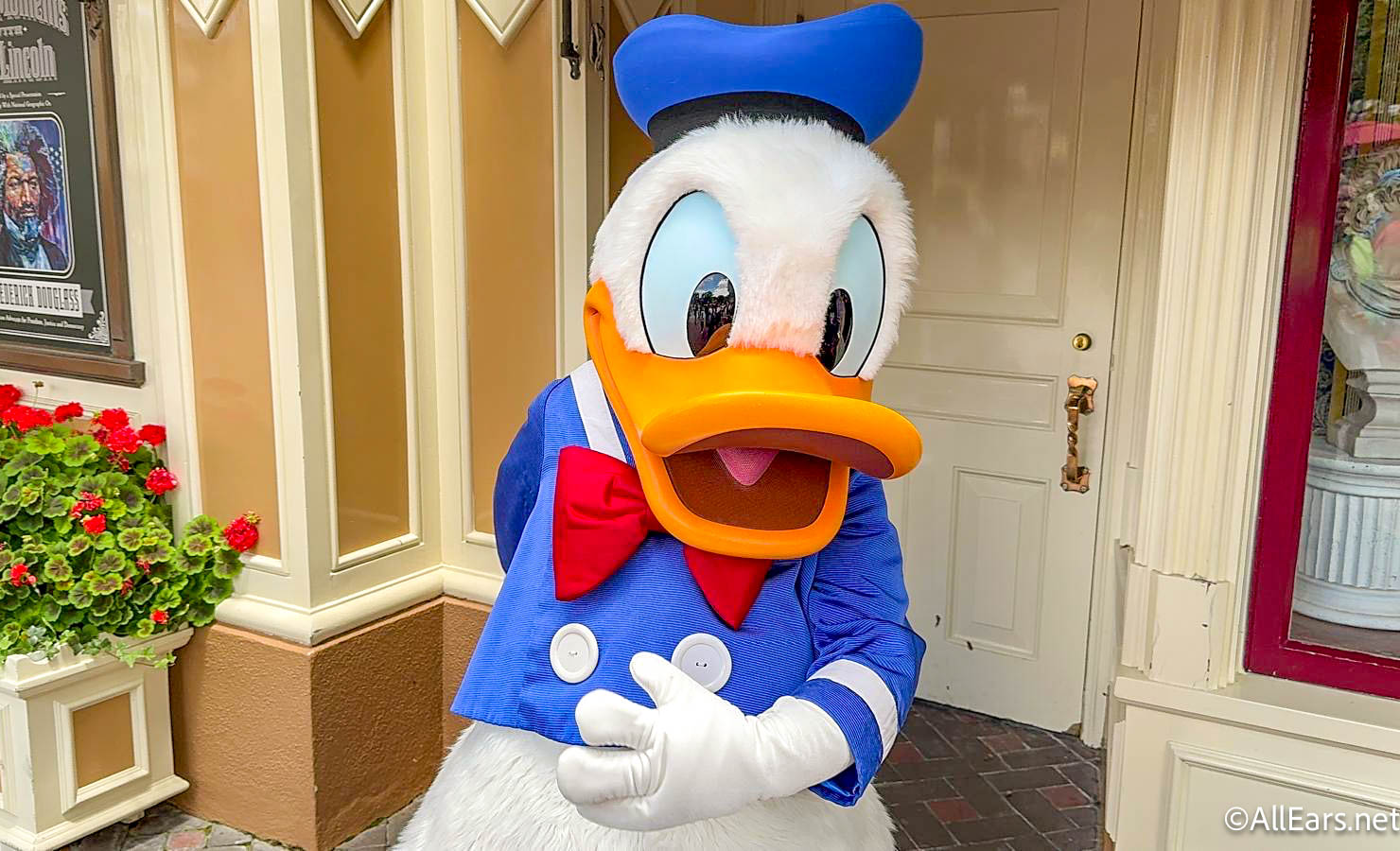
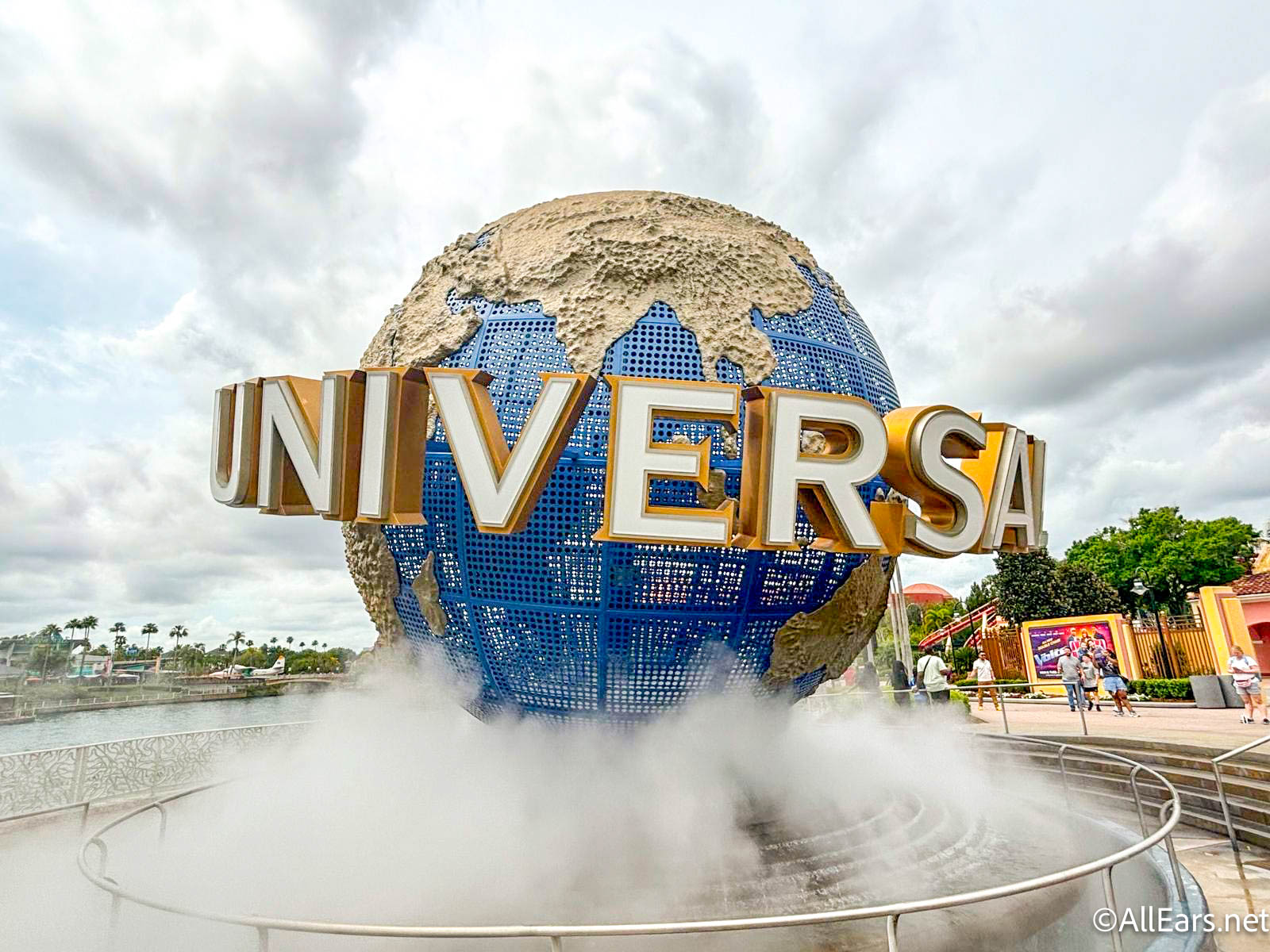


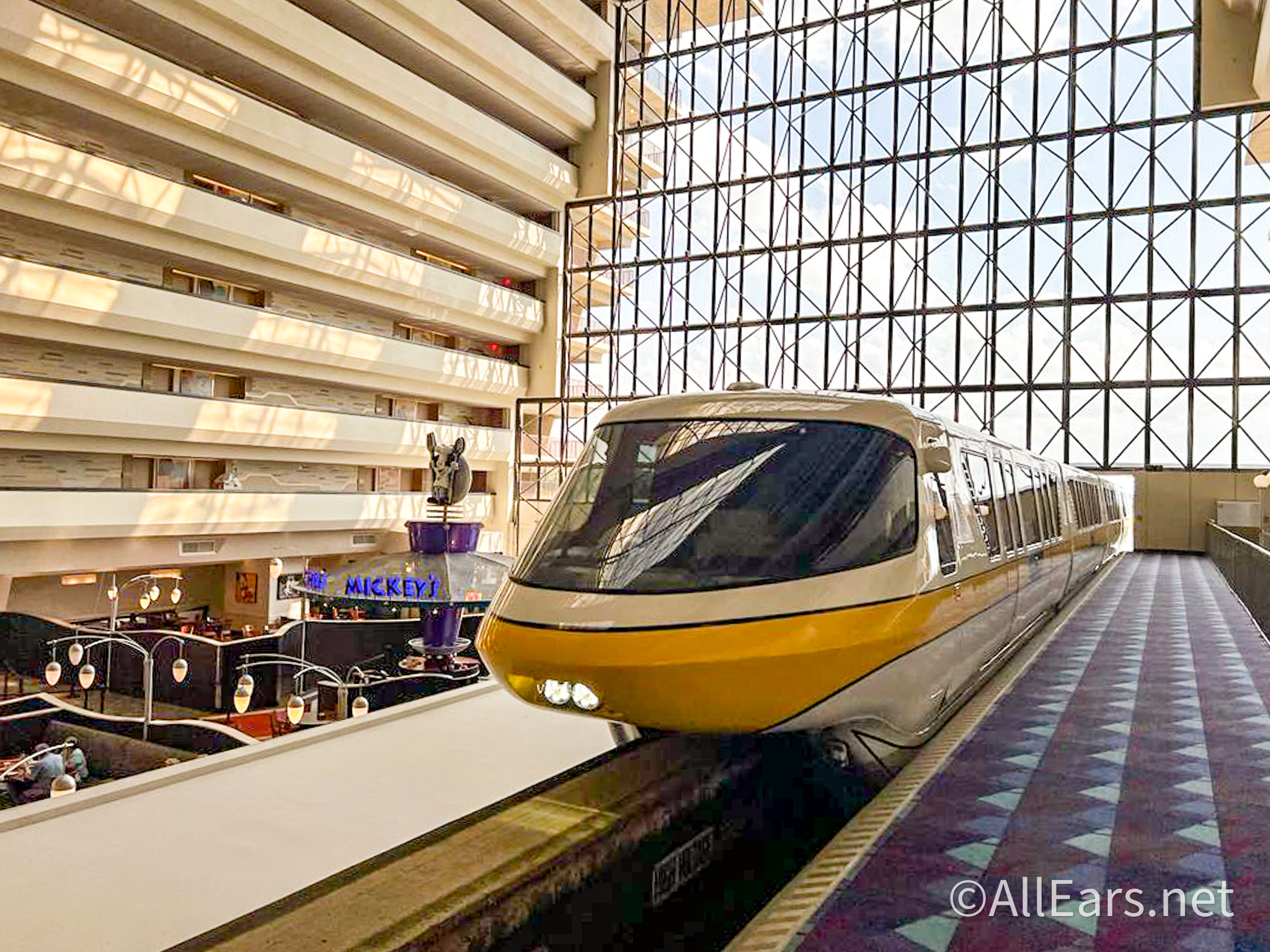




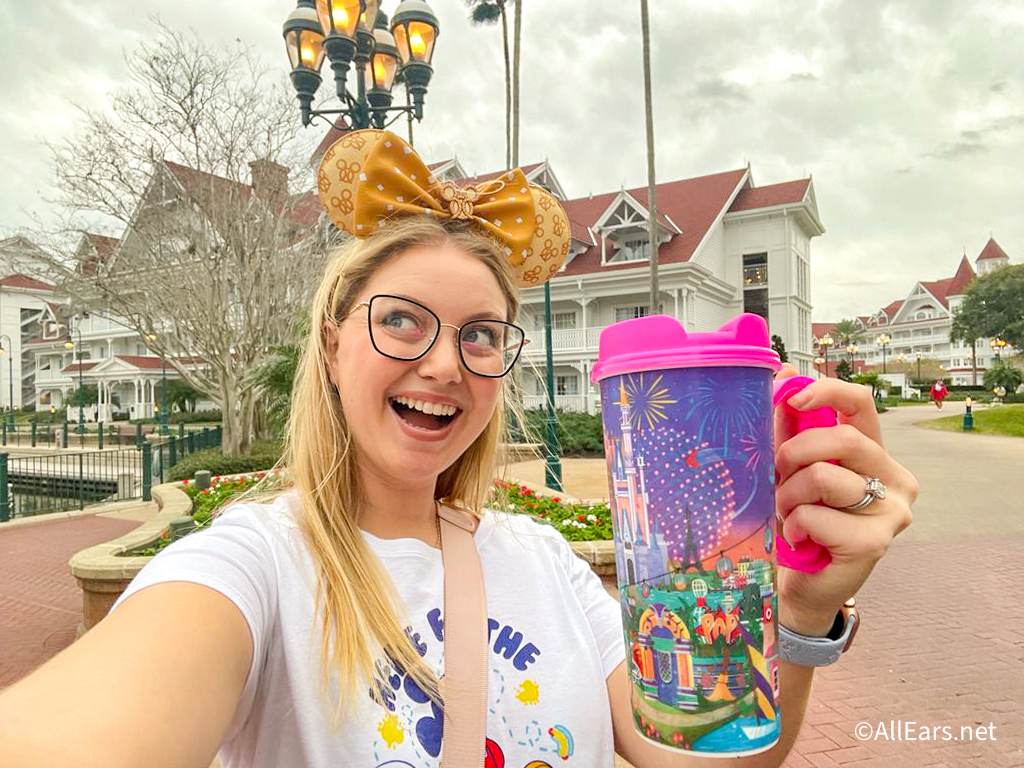
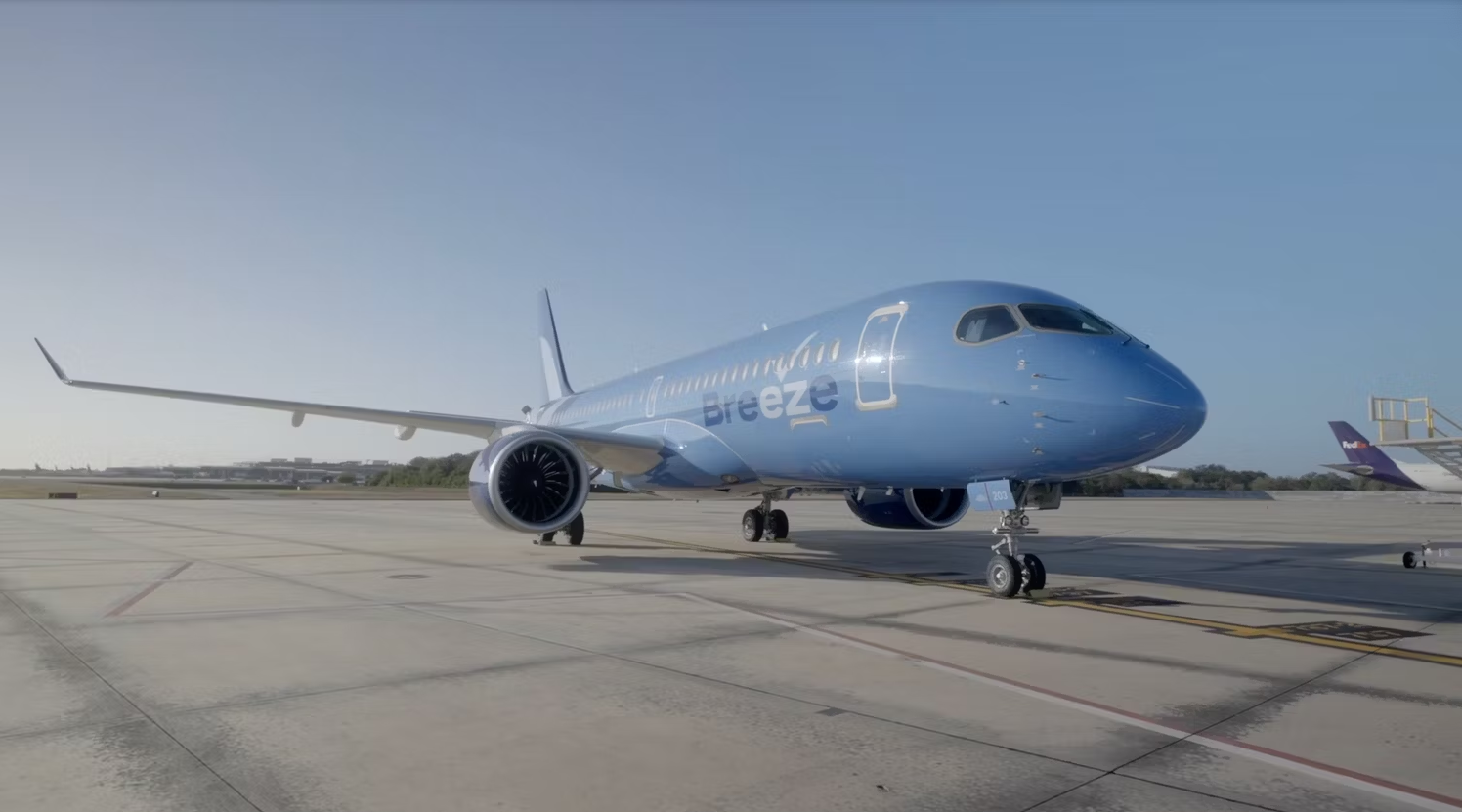



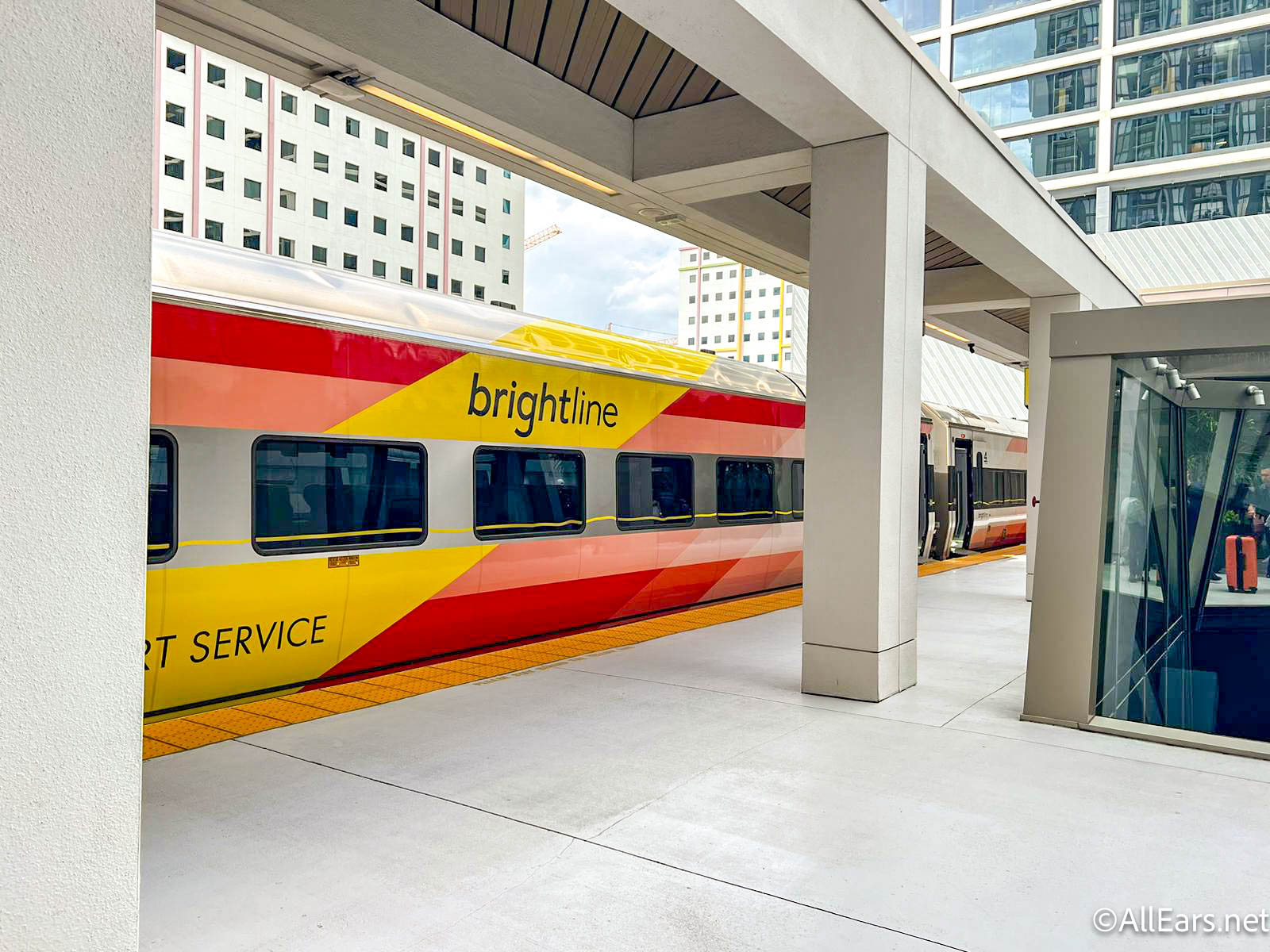



I sure wish they would have the Alice ride at Disney World, but I doubt that will ever happen. Too retro with simple effects, and not prone to handle huge amounts of people. But it is so charming….to include floating down the floral leaves before the grand finale scene.